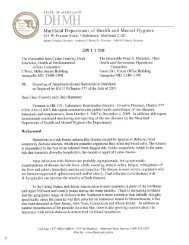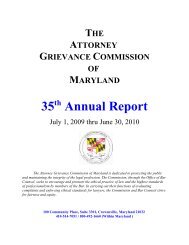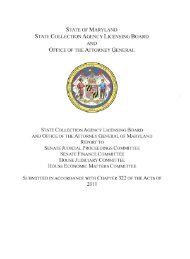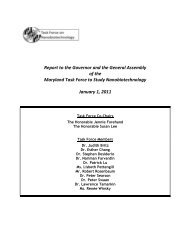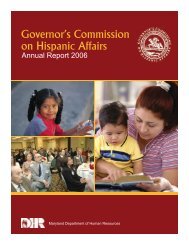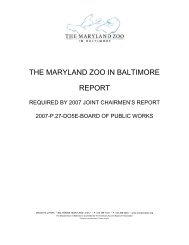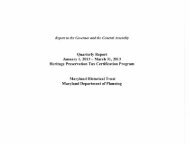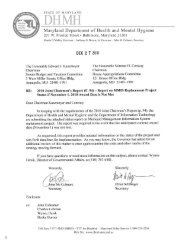Update of the Legislators' Guide To Video Lottery Terminal Gambling
Update of the Legislators' Guide To Video Lottery Terminal Gambling
Update of the Legislators' Guide To Video Lottery Terminal Gambling
You also want an ePaper? Increase the reach of your titles
YUMPU automatically turns print PDFs into web optimized ePapers that Google loves.
Chapter 7. Social Costs and Economic Development Effects <strong>of</strong> <strong>Gambling</strong> 34<br />
Exhibit 7.1<br />
DSM-IV Criteria for <strong>Gambling</strong> Classification<br />
Preoccupation Is preoccupied with gambling<br />
<strong>To</strong>lerance Needs to gamble in increasing amounts to achieve satisfaction<br />
Withdrawal Is irritable or restless when attempting to cut down or stop gambling<br />
Escape Gambles to escape from problems<br />
Chasing Returns <strong>of</strong>ten to get even after losing money gambling<br />
Lying Lies to family members and o<strong>the</strong>rs about extent <strong>of</strong> gambling<br />
Loss <strong>of</strong> Control Makes repeated unsuccessful attempts to control gambling<br />
Illegal Acts Commits illegal acts to finance gambling<br />
Risked Relationships Jeopardizes job, significant relationship, or educational or career opportunities as<br />
a result <strong>of</strong> gambling<br />
Bailout Relies on o<strong>the</strong>rs to provide money as a result <strong>of</strong> gambling<br />
Source: Diagnostic and Statistical Manual for Mental Disorders, fourth version (DSM-IV) <strong>of</strong> <strong>the</strong> American<br />
Psychiatric Association<br />
Low-risk gamblers report no criteria. At-risk gamblers have one or two criteria while<br />
problem gamblers have three or four criteria. The DSM-IV criteria characterize pathological<br />
gambling as a “persistent and recurrent maladaptive gambling behavior that disrupts personal,<br />
family, or vocational pursuits” as evidenced by reporting five or more criteria.<br />
Prevalence <strong>of</strong> Problem and Pathological <strong>Gambling</strong><br />
Pathological and problem gambling prevalence is frequently reported as ei<strong>the</strong>r “past<br />
year” or “lifetime.” The distinction is based on when, ei<strong>the</strong>r within <strong>the</strong> past year or at any time,<br />
<strong>the</strong> individual reported <strong>the</strong> DSM-IV symptoms. Researchers are usually referring to lifetime<br />
prevalence rates when discussing <strong>the</strong> number <strong>of</strong> problem and pathological gamblers.<br />
The National Research Council (NRC) <strong>of</strong> <strong>the</strong> National Academy <strong>of</strong> Sciences has<br />
estimated national prevalence rates for different classifications <strong>of</strong> gamblers. Exhibit 7.2 lists <strong>the</strong><br />
estimated past year and lifetime problem and pathological prevalence rates.



